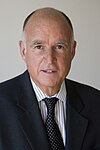User:Sillygoose762/sandbox
| ||||||||||||||||||||||||||||||||||||||||||||||||||||||||||||||||||||
636 seats in the House of Representatives 538 Constituency seats | 98 List seats *The month was not known as July at the time 385 seats needed for a majority | ||||||||||||||||||||||||||||||||||||||||||||||||||||||||||||||||||||
|---|---|---|---|---|---|---|---|---|---|---|---|---|---|---|---|---|---|---|---|---|---|---|---|---|---|---|---|---|---|---|---|---|---|---|---|---|---|---|---|---|---|---|---|---|---|---|---|---|---|---|---|---|---|---|---|---|---|---|---|---|---|---|---|---|---|---|---|---|
| Turnout | 56.77%, | |||||||||||||||||||||||||||||||||||||||||||||||||||||||||||||||||||
| ||||||||||||||||||||||||||||||||||||||||||||||||||||||||||||||||||||
| ||||||||||||||||||||||||||||||||||||||||||||||||||||||||||||||||||||
| |||||||||||||||||||||||||||||||||||||||||||||||||||||||||||||||||||||||||||||||||
636 seats in the House of Representatives 538 Constituency seats | 98 List seats 314 seats needed for a majority | |||||||||||||||||||||||||||||||||||||||||||||||||||||||||||||||||||||||||||||||||
|---|---|---|---|---|---|---|---|---|---|---|---|---|---|---|---|---|---|---|---|---|---|---|---|---|---|---|---|---|---|---|---|---|---|---|---|---|---|---|---|---|---|---|---|---|---|---|---|---|---|---|---|---|---|---|---|---|---|---|---|---|---|---|---|---|---|---|---|---|---|---|---|---|---|---|---|---|---|---|---|---|---|
| Turnout | 56.77%, | ||||||||||||||||||||||||||||||||||||||||||||||||||||||||||||||||||||||||||||||||
| |||||||||||||||||||||||||||||||||||||||||||||||||||||||||||||||||||||||||||||||||
| |||||||||||||||||||||||||||||||||||||||||||||||||||||||||||||||||||||||||||||||||
| |||||||||||||||||||||||||||||||||||||||||||||||||||||||||||||||||||||||||||||
627 seats in the House of Representatives 538 Constituency seats | 89 List seats 314 seats needed for a majority | |||||||||||||||||||||||||||||||||||||||||||||||||||||||||||||||||||||||||||||
|---|---|---|---|---|---|---|---|---|---|---|---|---|---|---|---|---|---|---|---|---|---|---|---|---|---|---|---|---|---|---|---|---|---|---|---|---|---|---|---|---|---|---|---|---|---|---|---|---|---|---|---|---|---|---|---|---|---|---|---|---|---|---|---|---|---|---|---|---|---|---|---|---|---|---|---|---|---|
| Turnout | 56.77%, | ||||||||||||||||||||||||||||||||||||||||||||||||||||||||||||||||||||||||||||
| |||||||||||||||||||||||||||||||||||||||||||||||||||||||||||||||||||||||||||||
| |||||||||||||||||||||||||||||||||||||||||||||||||||||||||||||||||||||||||||||
| |||||||||||||||||||||||||||||||||||||||||||||||||||||||||||||||||||||||||||||
593 seats in the House of Representatives 538 Constituency seats | 55 List seats 270 seats needed for a majority | |||||||||||||||||||||||||||||||||||||||||||||||||||||||||||||||||||||||||||||
|---|---|---|---|---|---|---|---|---|---|---|---|---|---|---|---|---|---|---|---|---|---|---|---|---|---|---|---|---|---|---|---|---|---|---|---|---|---|---|---|---|---|---|---|---|---|---|---|---|---|---|---|---|---|---|---|---|---|---|---|---|---|---|---|---|---|---|---|---|---|---|---|---|---|---|---|---|---|
| Turnout | 51.90%, | ||||||||||||||||||||||||||||||||||||||||||||||||||||||||||||||||||||||||||||
| |||||||||||||||||||||||||||||||||||||||||||||||||||||||||||||||||||||||||||||
| |||||||||||||||||||||||||||||||||||||||||||||||||||||||||||||||||||||||||||||
| |||||||||||||||||||||||||||||||||||||||||||||||||||||||||||||||||||||||||||||||||||||||||||||||||||||||||||||||||||||||||
538 seats in the House of Representatives 270 seats needed for a majority | |||||||||||||||||||||||||||||||||||||||||||||||||||||||||||||||||||||||||||||||||||||||||||||||||||||||||||||||||||||||||
|---|---|---|---|---|---|---|---|---|---|---|---|---|---|---|---|---|---|---|---|---|---|---|---|---|---|---|---|---|---|---|---|---|---|---|---|---|---|---|---|---|---|---|---|---|---|---|---|---|---|---|---|---|---|---|---|---|---|---|---|---|---|---|---|---|---|---|---|---|---|---|---|---|---|---|---|---|---|---|---|---|---|---|---|---|---|---|---|---|---|---|---|---|---|---|---|---|---|---|---|---|---|---|---|---|---|---|---|---|---|---|---|---|---|---|---|---|---|---|---|---|---|
| Turnout | 56.70%, | ||||||||||||||||||||||||||||||||||||||||||||||||||||||||||||||||||||||||||||||||||||||||||||||||||||||||||||||||||||||||
| |||||||||||||||||||||||||||||||||||||||||||||||||||||||||||||||||||||||||||||||||||||||||||||||||||||||||||||||||||||||||
| |||||||||||||||||||||||||||||||||||||||||||||||||||||||||||||||||||||||||||||||||||||||||||||||||||||||||||||||||||||||||
The 1919 United Provinces General Election was the 35th General Election in American history. It took place one year after the Armistice with Germany was signed, ending American involvement in World War I.
While the war was a success, the aftermath was chaotic, coinciding with the Spanish Flu Pandemic and persecutions of suspected left-wing sympathizers by Home Secretary A. Mitchell Palmer. Leonard Wood, who essentially ran the war abroad along with Wilson, was the incumbent Republican leader after Hughes' resignation but decided to retire at the end of his term. This left the Republican Party fractured, unable to coalesce around a national leader. Some conservatives rallied around popular Governor of Illinois Frank O. Lowden under the "National Republican" label. Tory leader Henry Cabot Lodge won re-nomination by his party. Many Democrats and Republican candidates switched to the rapidly growing Progressive Party, which advocated New Nationalism, buttressed by a strong anti-immigration faction that gained significant support in the West. Many Coalition Progressives failed to receive re-nomination The Democratic Party was also badly divided, split between the pro-Wilson bloc and a more conservative faction led by John W. Davis.
The election was one of the most disruptive in history, auguring the collapse of the Third Party System. The election signaled a clear rejection of the status quo. Republicans kept a plurality of seats but lost critical support among Western voters and some Progressives. The Coalition Democrats lost badly, gaining fewer seats than the Conservatives, resulting in long negotiations that would reunite the party in late 1919. The Tories became the second largest party, and the Progressive Party received the second most votes and became the third largest party the in the House. Coalition Progressives lost nearly all seats, but those who remained largely rejoined the main party. Regional Party performance was mixed. The Texas Republican Party gaining seats for the first time in 20 years, while the California Liberal Party became unrepresented in the House for the first time in 16 years.
While the Republicans were the largest party, they were dysfunctional and unable to choose a leader favored by potential coalition partners. Wilson was able to gather enough coalition support to form a minority government with tacit support from the Progressives, but lost favor and was deposed within a year, replaced by Warren G. Harding until fresh elections took place in November 1921.
The 1921 United Provinces General Election was the 36th General Election in American History. It took place shortly after fresh elections were called by Prime Minister Warren G. Harding, who was ruling as a caretaker due to an inability to form a government. This was the first election in which all women over the age of 21 were granted suffrage. Additionally, 46 List seats were created via proportional representation through the Representation of the People Act 1920.
The election resulted in the the Tory gaining 47 seats, the most among all parties. Tory Leader Henry Cabot Lodge had become popular due to his leadership both domestically and internationally, as well as through being an opponent of Wilson, who was still unpopular at the time. The Progressive Party was plagued by infighting and lost 32 seats. The Socialist Party of America won 10 seats, gaining 6 through the list. Lodge was able to form a coalition government with Republican allies, securing a comfortable majority with Charles Dawes signing on as Deputy Prime Minister. Dawes would assume leadership of the party soon after. Lodge and Dawes were sworn in by President Charles Evans Hughes on 25 November.
This election had the lowest turnout among eligible voters at 51.9%, largely due to low turnout among women.
The 1933 United Provinces General Election the 39th general election in American history. It took place in the midst of the Great Depression, a worldwide economic collapse that resulted in 25% unemployment (maximum estimate), deflation, and reduced wages, meaning widespread poverty.
President Hoover was seen as ineffective, as his policies in the previous 4 years were not enough to change the tide of the Depression. Franklin Delano Roosevelt emerged as Hoover's primary opponent and defeated him and the Republicans in a landslide, winning an outright majority of seats.
The 1936 United States Presidential Election was the 40th general election in American history. I
| ||||||||||||||||||||||||||||||||||||||||||||||||||||||
538 seats in the House of Representatives 270 seats needed for a majority | ||||||||||||||||||||||||||||||||||||||||||||||||||||||
|---|---|---|---|---|---|---|---|---|---|---|---|---|---|---|---|---|---|---|---|---|---|---|---|---|---|---|---|---|---|---|---|---|---|---|---|---|---|---|---|---|---|---|---|---|---|---|---|---|---|---|---|---|---|---|
| Turnout | 62.70% | |||||||||||||||||||||||||||||||||||||||||||||||||||||
| ||||||||||||||||||||||||||||||||||||||||||||||||||||||
| ||||||||||||||||||||||||||||||||||||||||||||||||||||||
| ||||||||||||||||||||||||||||||||||||||||||||||||||||||
690 seats in the Lok Sabha 345 seats needed for a majority | ||||||||||||||||||||||||||||||||||||||||||||||||||||||
|---|---|---|---|---|---|---|---|---|---|---|---|---|---|---|---|---|---|---|---|---|---|---|---|---|---|---|---|---|---|---|---|---|---|---|---|---|---|---|---|---|---|---|---|---|---|---|---|---|---|---|---|---|---|---|
| Turnout | 44.70% | |||||||||||||||||||||||||||||||||||||||||||||||||||||
| ||||||||||||||||||||||||||||||||||||||||||||||||||||||
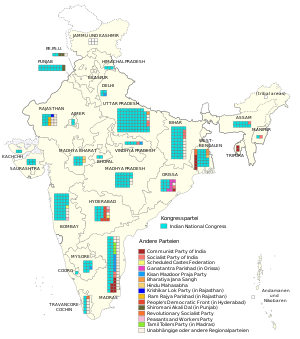 | ||||||||||||||||||||||||||||||||||||||||||||||||||||||
| ||||||||||||||||||||||||||||||||||||||||||||||||||||||
| |||||||||||||||||||||||||||||||||||||||||||||||||||||||||||||||
538 members of the Electoral College 270 electoral votes needed to win | |||||||||||||||||||||||||||||||||||||||||||||||||||||||||||||||
|---|---|---|---|---|---|---|---|---|---|---|---|---|---|---|---|---|---|---|---|---|---|---|---|---|---|---|---|---|---|---|---|---|---|---|---|---|---|---|---|---|---|---|---|---|---|---|---|---|---|---|---|---|---|---|---|---|---|---|---|---|---|---|---|
| Opinion polls | |||||||||||||||||||||||||||||||||||||||||||||||||||||||||||||||
| |||||||||||||||||||||||||||||||||||||||||||||||||||||||||||||||
 2024 electoral map, based on 2020 census | |||||||||||||||||||||||||||||||||||||||||||||||||||||||||||||||
| |||||||||||||||||||||||||||||||||||||||||||||||||||||||||||||||
| World War III | |||||||||
|---|---|---|---|---|---|---|---|---|---|
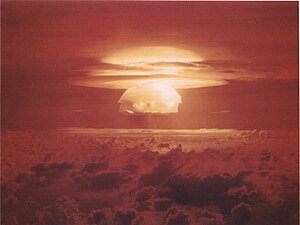 | |||||||||
| |||||||||
| Belligerents | |||||||||
|
Supported by: |
| ||||||||
| Commanders and leaders | |||||||||
| Strength | |||||||||
|
Total: 673,900 |
Total: 889,000[2] 888,000 mobilised 324,478 deployed | ||||||||
| Casualties and losses | |||||||||
|
Total: 165,363 dead |
Total: 450,015 dead[3][2] 73,125 combat deaths 376,890 non-combat deaths | ||||||||
| Casualties include death by disease. In all cases, death by disease exceeded the sum of "killed in action" or "died of wounds". | |||||||||
 Staples Center, hours before the game | |||||||||||
| |||||||||||
| Date | June 17, 2010 | ||||||||||
|---|---|---|---|---|---|---|---|---|---|---|---|
| Venue | Staples Center, Los Angeles, California | ||||||||||
| Favorite | Lakers by 7 | ||||||||||
| Referees | Joey Crawford, Dan Crawford, Scott Foster | ||||||||||
| Attendance | 18,997 | ||||||||||
| Network | ABC | ||||||||||
| Announcers | Mike Breen, Mark Jackson, Jeff Van Gundy, and Lisa Salters | ||||||||||
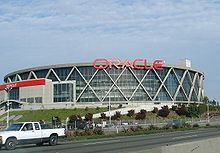 Oracle Arena, site of the game | |||||||||||
| |||||||||||
| Date | June 19, 2016 | ||||||||||
|---|---|---|---|---|---|---|---|---|---|---|---|
| Venue | Oracle Arena, Oakland, California | ||||||||||
| Favorite | Warriors by 4.5 | ||||||||||
| Referees | Mike Callahan, Dan Crawford, Monty McCutchen | ||||||||||
| Attendance | 19,596 | ||||||||||
| Network | ABC | ||||||||||
| Announcers | Mike Breen, Mark Jackson, Jeff Van Gundy, and Lisa Salters | ||||||||||
| Administrative division | Capital | Population |
|---|---|---|
| Quetta | 12,344,408 | |
| Lahore | 110,126,285 | |
| Karachi | 47,886,051 | |
| Peshawar | 40,525,047 | |
| Gilgit | 1,800,000 | |
| Muzaffarabad | 4,567,982 | |
| Islamabad Capital Territory | Islamabad | 2,851,868 |
| ||||||||||||||||||||||||||||||||||||||||||||||||||||||
690 seats in the Lok Sabha 345 seats needed for a majority | ||||||||||||||||||||||||||||||||||||||||||||||||||||||
|---|---|---|---|---|---|---|---|---|---|---|---|---|---|---|---|---|---|---|---|---|---|---|---|---|---|---|---|---|---|---|---|---|---|---|---|---|---|---|---|---|---|---|---|---|---|---|---|---|---|---|---|---|---|---|
| Turnout | 44.70% | |||||||||||||||||||||||||||||||||||||||||||||||||||||
| ||||||||||||||||||||||||||||||||||||||||||||||||||||||
 | ||||||||||||||||||||||||||||||||||||||||||||||||||||||
| ||||||||||||||||||||||||||||||||||||||||||||||||||||||
| |||||||||||||||||||||||||
102 seats contested 52 seats needed for a majority | |||||||||||||||||||||||||
|---|---|---|---|---|---|---|---|---|---|---|---|---|---|---|---|---|---|---|---|---|---|---|---|---|---|
| |||||||||||||||||||||||||
 | |||||||||||||||||||||||||
| |||||||||||||||||||||||||
US 101 highlighted in red | ||||
| Route information | ||||
| Maintained by Caltrans | ||||
| Length | 808.111 mi[4] (1,300.529 km) Portions of US 101 have been relinquished to or are otherwise maintained by local or other governments, and are not included in the length. | |||
| Existed | November 11, 1926[5][6]–present | |||
| Tourist routes |
| |||
| NHS | Entire route | |||
| Major junctions | ||||
| South end | ||||
| ||||
| North end | ||||
| Location | ||||
| Country | United States | |||
| Counties | Los Angeles, Ventura, Santa Barbara, San Luis Obispo, Monterey, San Benito, Santa Clara, San Mateo, San Francisco, Marin, Sonoma, Mendocino, Humboldt, Del Norte | |||
| Highway system | ||||
| ||||
| |||||||||||||||||||||||||||||||||||||
538 members of the Electoral College 270 electoral votes needed to win | |||||||||||||||||||||||||||||||||||||
|---|---|---|---|---|---|---|---|---|---|---|---|---|---|---|---|---|---|---|---|---|---|---|---|---|---|---|---|---|---|---|---|---|---|---|---|---|---|
| Opinion polls | |||||||||||||||||||||||||||||||||||||
| Turnout | 58.9%[9] | ||||||||||||||||||||||||||||||||||||
| |||||||||||||||||||||||||||||||||||||
 Presidential election results map. Blue denotes states won by Obama/Biden and red denotes those won by Romney/Ryan. Numbers indicate electoral votes cast by each state and the District of Columbia. | |||||||||||||||||||||||||||||||||||||
| |||||||||||||||||||||||||||||||||||||
Federal Union of India | |||||||||
|---|---|---|---|---|---|---|---|---|---|
| 1948–1956 | |||||||||
![Administrative divisions of India, 1949[d]](http://upload.wikimedia.org/wikipedia/commons/thumb/b/b1/India_Administrative_Divisions_1949-Kashmir.jpg/250px-India_Administrative_Divisions_1949-Kashmir.jpg) Administrative divisions of India, 1949[d] | |||||||||
| Capital | Calcutta | ||||||||
| Official languages | English, Hindustani | ||||||||
| Recognised national languages | None | ||||||||
| Recognised regional languages | Urdu | ||||||||
| Common languages | Hindi, Urdu, Bengali, Punjabi, Telugu, Marathi, Tamil | ||||||||
| Demonym(s) | Indian, Desi, Hindustani, Sindhu | ||||||||
| Monarch | |||||||||
• 1947–1950 | George VI | ||||||||
| Governor-General | |||||||||
• 1947–1948 | Lord Mountbatten | ||||||||
• 1948–1950 | Chakravarti Rajagopalachari | ||||||||
| Prime Minister | |||||||||
• 1947–1950 | Jawaharlal Nehru[11] | ||||||||
| Legislature | Constituent Assembly | ||||||||
| History | |||||||||
| 15 August 1948 | |||||||||
• Republic | 26 January 1956 | ||||||||
| Area | |||||||||
| 1949–1950 | 3,159,814[12] km2 (1,220,011 sq mi) | ||||||||
| Population | |||||||||
• 1949–1950 | 360,185,000 (estimated)[12] | ||||||||
| Currency | Indian rupee | ||||||||
| |||||||||
| Today part of | India China[e] Bangladesh[f] | ||||||||
Union of California | |||||||||||||
|---|---|---|---|---|---|---|---|---|---|---|---|---|---|
| 1870-1920 | |||||||||||||
| Motto: Liberty, Equality, Fraternity | |||||||||||||
| Anthem: "I Love You, California" | |||||||||||||
 Mexico's Department of Alta California, of which the coastline and Mojave Desert were controlled by the Republican Government | |||||||||||||
| Status | Sovereign state (1876-1920) | ||||||||||||
| Capital | Vallejo (1870-1876)
Sacramento (1876-1900) San Jose (1900-1920) | ||||||||||||
| Official languages | English Spanish (from 1896) | ||||||||||||
| Recognised national languages | None | ||||||||||||
| Common languages | Spanish, indigenous languages, and English | ||||||||||||
| Demonym(s) | Californian | ||||||||||||
| Government | Military Government (1870-1876)
| ||||||||||||
| President | |||||||||||||
• 1871-1879 | John C. Frémont | ||||||||||||
| Population | |||||||||||||
• 1870 | 800,000 | ||||||||||||
• 1920 | 5,200,000 | ||||||||||||
| |||||||||||||
Union of New England and Atlantic Provinces (1833-1837) United Provinces of North America (1837–1871) | |||||||||||||||||||||||
|---|---|---|---|---|---|---|---|---|---|---|---|---|---|---|---|---|---|---|---|---|---|---|---|
| 1833–1871 | |||||||||||||||||||||||
| Motto: {{center|”E Pluribus Unum”} | |||||||||||||||||||||||
 Map of the UPNA in 1833 | |||||||||||||||||||||||
| Capital |
| ||||||||||||||||||||||
| Official languages | English | ||||||||||||||||||||||
| Other languages | Dutch, French, German, Iroquoian Languages, Algonquian Languages, Massachusett, Other Indigenous Languages | ||||||||||||||||||||||
| Government | Federal parliamentary constitutional monarchy | ||||||||||||||||||||||
| President1</sup | |||||||||||||||||||||||
• 1836 | David G. Burnet | ||||||||||||||||||||||
• 1836–38 | Sam Houston, 1st term | ||||||||||||||||||||||
• 1838–41 | Mirabeau B. Lamar | ||||||||||||||||||||||
• 1841–44 | Sam Houston, 2nd term | ||||||||||||||||||||||
• 1844–46 | Anson Jones | ||||||||||||||||||||||
| Vice President1 | |||||||||||||||||||||||
• 1836 | Lorenzo de Zavala | ||||||||||||||||||||||
• 1836–38 | Mirabeau B. Lamar | ||||||||||||||||||||||
• 1838–41 | David G. Burnet | ||||||||||||||||||||||
• 1841–44 | Edward Burleson | ||||||||||||||||||||||
• 1844–45 | Kenneth L. Anderson | ||||||||||||||||||||||
| Legislature | Continental Congress | ||||||||||||||||||||||
| Historical era | Western Expansion | ||||||||||||||||||||||
| March 4, 1833 | |||||||||||||||||||||||
| December 29, 1845 | |||||||||||||||||||||||
• Transfer of power | March 4, 1871 | ||||||||||||||||||||||
| Currency | Texas dollar | ||||||||||||||||||||||
| |||||||||||||||||||||||
| Today part of | |||||||||||||||||||||||
1Interim period (March 16 – October 22, 1836): President: David G. Burnet, Vice President Lorenzo de Zavala | |||||||||||||||||||||||
Presidency of Canada and the Great Lakes | |||||||||||||||
|---|---|---|---|---|---|---|---|---|---|---|---|---|---|---|---|
| 1791–1870 | |||||||||||||||
| Motto: Nunquam libertas gratior extat (Latin) Nowhere does liberty appear in a greater form (English) | |||||||||||||||
| Anthem: "God Save the King" | |||||||||||||||
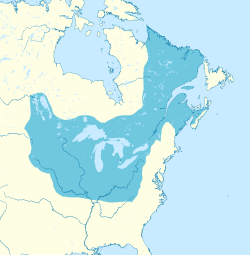 Map of the Dominion, represented in dark red, as of 1688. Names of the constituent and neighboring colonies also shown. | |||||||||||||||
| Status | Disestablished | ||||||||||||||
| Capital | Niagara {1791-1797) York (1797-1850) Toronto (1850-) | ||||||||||||||
| Largest city | Chicago | ||||||||||||||
| Common languages | English, French, Iroquoian, Algonquian | ||||||||||||||
| Government | Direct rule colonial government (1791-97)
Family Compact Oligarchy (1797-1833) Responsible Government under a Constitutional Monarchy (1833-1867) Provincial Government of The United Provinces of America (1867-1870) | ||||||||||||||
| Monarch | |||||||||||||||
• 1791-1820 | George III | ||||||||||||||
• 1820-1830 | George IV | ||||||||||||||
• 1830-1837 | William IV | ||||||||||||||
• 1837-1867 | Victoria | ||||||||||||||
| Royal Governor | |||||||||||||||
• 1686 | Joseph Dudley | ||||||||||||||
• 1686–1689 | Edmund Andros | ||||||||||||||
| Lieutenant Governor | |||||||||||||||
• 1688–1689 | Francis Nicholson | ||||||||||||||
| Legislature | Legislative Council of Canada | ||||||||||||||
| Historical era | British colonization of the Americas Glorious Revolution Colonial History of the United States | ||||||||||||||
• Established | 1791 | ||||||||||||||
• Overthrow of the Family Compact | May 31, 1833 | ||||||||||||||
• Accession into The United Provinces of America | December 31, 1859 | ||||||||||||||
• Disestablished | 1870 | ||||||||||||||
| Currency | Pound sterling | ||||||||||||||
| |||||||||||||||
| Today part of | United States | ||||||||||||||
| Route information | ||||
|---|---|---|---|---|
| Maintained by Caltrans | ||||
| Length | 42.169 mi[4] (67.864 km) | |||
| Existed | 1964[13]–present | |||
| Major junctions | ||||
| West end | ||||
| East end | ||||
| Location | ||||
| Country | United States | |||
| State | California | |||
| Counties | San Mateo, Alameda | |||
| Highway system | ||||
| ||||
Province of Canada Province du Canada (French) | |||||||||||||||
|---|---|---|---|---|---|---|---|---|---|---|---|---|---|---|---|
| 1841–1867 | |||||||||||||||
| Status | British colony | ||||||||||||||
| Capital | Kingston 1841–44 Montréal 1844–49 Toronto 1849–1852, 1856–1858 Quebec City 1852–56, 1859–1866 Ottawa 1866–67 | ||||||||||||||
| Common languages | English, French | ||||||||||||||
| Government | Responsible government under a constitutional monarchy | ||||||||||||||
| Monarch | |||||||||||||||
• 1841-1867 | Queen Victoria | ||||||||||||||
| Governor General | |||||||||||||||
• 1841 | Charles Poulett Thomson, 1st Baron Sydenham | ||||||||||||||
• 1861-1867 | Charles Monck, 4th Viscount Monck | ||||||||||||||
| Premier | |||||||||||||||
• 1841-1842 | Samuel Harrison | ||||||||||||||
• 1865-1867 | Narcisse-Fortunat Belleau | ||||||||||||||
| Legislature | Parliament of the Province of Canada | ||||||||||||||
| Historical era | Pre-Confederation era | ||||||||||||||
| 10 February 1841 | |||||||||||||||
| 11 March 1848 | |||||||||||||||
| 1 July 1867 | |||||||||||||||
| Population | |||||||||||||||
• 1860–61 | 2,507,657 | ||||||||||||||
| Currency | Canadian pound 1841–58 Canadian dollar 1858–67 | ||||||||||||||
| |||||||||||||||
| Route information | ||||
|---|---|---|---|---|
| Maintained by Caltrans | ||||
| Length | 43.4 mi[4] (69.8 km) | |||
| Existed | 1964[13]–present | |||
| Major junctions | ||||
| West end | ||||
| East end | ||||
| Location | ||||
| Country | United States | |||
| State | California | |||
| Counties | San Mateo, Alameda | |||
| Highway system | ||||
| ||||
| |||||||||||||||||||||||||||||||||||||||||||||||||||||
All 650 seats in the House of Commons | |||||||||||||||||||||||||||||||||||||||||||||||||||||
|---|---|---|---|---|---|---|---|---|---|---|---|---|---|---|---|---|---|---|---|---|---|---|---|---|---|---|---|---|---|---|---|---|---|---|---|---|---|---|---|---|---|---|---|---|---|---|---|---|---|---|---|---|---|
| Turnout | 69.42% | ||||||||||||||||||||||||||||||||||||||||||||||||||||
| |||||||||||||||||||||||||||||||||||||||||||||||||||||
| 32 | March 4, 1933–
April 12, 1945 |
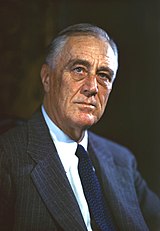
|
Franklin D. Roosevelt[i] | Democratic | 1932 | John Nance Garner | |
|---|---|---|---|---|---|---|---|
| 1936 | |||||||
| 1940 | Henry A. Wallace | ||||||
| 1944 | Harry S. Truman | ||||||
| 33 | April 12, 1945–
January 20, 1953 |

|
Harry S. Truman | Democratic | |||
| 1948 | Alben W. Barkley | ||||||
| 34 | January 20, 1953–
January 20, 1957 |

|
Robert Taft | Republican | 1952 | Adlai Stevenson | |
| 35 | January 20, 1957–
January 20, 1965 |

|
Dwight D. Eisenhower | Independent | 1956 | John Lindsay | |
| 1960 | |||||||
| 36 | January 20, 1965–
November 22, 1967 |

|
John F. Kennedy | Democratic | 1964 | Lyndon B. Johnson | |
| 37 | November 22, 1967–
January 20, 1973 |
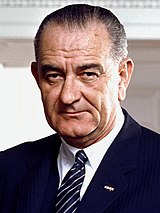
|
Lyndon B. Johnson | Democratic | 1968 | Hubert Humphrey | |
| 38 | January 20, 1973–
January 20, 1977 |

|
Robert F. Kennedy | Democratic | 1972 | George Romney | |
| 1976 | |||||||
| 39 | January 20, 1977–
January 20, 1981 |

|
Nelson Rockefeller | Independent | 1977 | Gerald Ford | |
| 40 | January 20, 1981–
January 20, 1989 |
Ronald Reagan | Republican | ||||
| 41 | January 20, 1989–
January 20, 1993 |
George H. W. Bush | Republican | ||||
| 42 | January 20, 1993–
January 20, 2001 |
Ross Perot | Independent | ||||
| 43 | January 20, 2001–
January 20, 2009 |
Al Gore | Democratic | Joe Lieberman | |||
| 44 | January 20, 2009–
January 20, 2013 |
John McCain | Republican | Mitt Romney | |||
| 45 | Barack Obama | Hillary Clinton | |||||
| 46 |
| Company type | Private |
|---|---|
| Industry | Paper |
| Founded | 1949 |
| Founder | Robert Dunder Robert Mifflin |
Key people | David Wallace, Former CFO, Current CEO Alan Brand, former CEO Michael Scott, VP, Northeast Region Dwight Schrute, Manager, Scranton Branch |
| Owner | David Wallace |
| Parent | Sabre Corp. (2010-2012) |
| Formerly | Athlead |
|---|---|
| Company type | Private |
| Industry | Sports Marketing |
| Founded | 2012 |
| Founder | Jim Halpert and Friends |
| Defunct | December 9, 2018 |
| Headquarters | Philadelphia, Pennsylvania |
Key people | Darryl Philbin, VP of Athlete Relations |
| Owner | David Wallace |
| Parent | Sabre Corp. (2010-2012) |
- ^ Badem 2010, p. 180.
- ^ a b c d e f g h i Clodfelter 2017, p. 180.
- ^ Mara Kozelsky, "The Crimean War, 1853–56." Kritika: Explorations in Russian and Eurasian History 13.4 (2012): 903–917 online.
- ^ a b c Cite error: The named reference
trucklistwas invoked but never defined (see the help page). - ^ McNichol, Dan (2006). The Roads that Built America: The Incredible Story of the US Interstate System. New York: Sterling. p. 74. ISBN 1-4027-3468-9.
- ^ Bureau of Public Roads & American Association of State Highway Officials (November 11, 1926). United States System of Highways Adopted for Uniform Marking by the American Association of State Highway Officials (Map). 1:7,000,000. Washington, DC: United States Geological Survey. OCLC 32889555. Retrieved November 7, 2013 – via Wikimedia Commons.
- ^ Cite error: The named reference
KEYTwas invoked but never defined (see the help page). - ^ Cite error: The named reference
caltransscenicwas invoked but never defined (see the help page). - ^ a b c Cite error: The named reference
FEC 2013was invoked but never defined (see the help page). - ^ "Press Communique' – State Emblem" (PDF). Press Information Bureau of India – Archive. Archived (PDF) from the original on 24 February 2018.
{{cite web}}:|archive-date=/|archive-url=timestamp mismatch; 8 August 2017 suggested (help) - ^ As Prime Minister of India until 1964.
- ^ a b S. H. Steinberg, ed. (1950), The Statesman's Year-Book, 1950, London: Macmillan and Co., Ltd, p. 137
- ^ a b Faigin, Daniel P. "County Highways - State Route 92". www.cahighways.org. Retrieved 2008-07-21.
Republic of India | |
|---|---|
| Motto: "Satyameva Jayate" (Sanskrit) "Truth Alone Triumphs"[1] | |
| Anthem: "Jana Gana Mana"[2][3] "Thou Art the Ruler of the Minds of All People"[4][2] | |
| National song "Vande Mataram" (Sanskrit) "I Bow to Thee, Mother"[j][1][2] | |
 Territory controlled by India shown in dark green; territory claimed but not controlled shown in light green | |
| Capital | New Delhi 28°36′50″N 77°12′30″E / 28.61389°N 77.20833°E |
| Largest city | |
| Official languages | |
| Recognised national languages | None[9][10][11] |
| Recognised regional languages | |
| Native languages | 447 languages[l] |
| Religion (2011) |
|
| Demonym(s) | Indian |
| Government | Federal parliamentary constitutional republic |
| Droupadi Murmu | |
| Venkaiah Naidu | |
| Narendra Modi | |
| N. V. Ramana | |
| Om Birla | |
| Legislature | Parliament |
| Rajya Sabha | |
| Lok Sabha | |
| Independence from the United Kingdom | |
• Dominion | 15 August 1947 |
• Republic | 26 January 1950 |
| Area | |
• Total | 3,287,263[2] km2 (1,269,219 sq mi)[m] (7th) |
• Water (%) | 9.6 |
| Population | |
• 2021 estimate | |
• 2011 census | 1,210,854,977[19][20] (2nd) |
• Density | 424.7/km2 (1,100.0/sq mi) (19th) |
| GDP (PPP) | 2022 estimate |
• Total | |
• Per capita | |
| GDP (nominal) | 2022 estimate |
• Total | |
• Per capita | |
| Gini (2011) | 35.7[22][23] medium (98th) |
| HDI (2019) | medium (131st) |
| Currency | Indian rupee (₹) (INR) |
| Time zone | UTC+05:30 (IST) |
| DST is not observed | |
| Date format |
|
| Driving side | left[25] |
| Calling code | +91 |
| ISO 3166 code | IN |
| Internet TLD | .in (others) |
- ^ From 2027
- ^ Until 1855
- ^ Until 1854
- ^ The northern border of India was not precisely defined until 1954.
- ^ See Sino-Indian War of 1962.
- ^ See territorial exchanges between India and Bangladesh (India–Bangladesh enclaves).
- ^ Princely States
- ^ Incorporated to the Sumatra Governorate in 1938
- ^ Cite error: The named reference
diednaturalwas invoked but never defined (see the help page). - ^ "[...] Jana Gana Mana is the National Anthem of India, subject to such alterations in the words as the Government may authorise as occasion arises; and the song Vande Mataram, which has played a historic part in the struggle for Indian freedom, shall be honoured equally with Jana Gana Mana and shall have equal status with it."[5]
- ^ According to Part XVII of the Constitution of India, Hindi in the Devanagari script is the official language of the Union, along with English as an additional official language.[1][6][7] States and union territories can have a different official language of their own other than Hindi or English.
- ^ Different sources give widely differing figures, primarily based on how the terms "language" and "dialect" are defined and grouped. Ethnologue lists 461 tongues for India (out of 6,912 worldwide), 447 of which are living, while 14 are extinct.[13][14]
- ^ "The country's exact size is subject to debate because some borders are disputed. The Indian government lists the total area as 3,287,260 km2 (1,269,220 sq mi) and the total land area as 3,060,500 km2 (1,181,700 sq mi); the United Nations lists the total area as 3,287,263 km2 (1,269,219 sq mi) and total land area as 2,973,190 km2 (1,147,960 sq mi)."[16]
- ^ See Date and time notation in India.
| This is the sandbox page for User:Sillygoose762 (diff). |
- ^ a b c National Informatics Centre 2005.
- ^ a b c d "National Symbols | National Portal of India". India.gov.in. Archived from the original on 4 February 2017. Retrieved 1 March 2017.
The National Anthem of India Jana Gana Mana, composed originally in Bengali by Rabindranath Tagore, was adopted in its Hindi version by the Constituent Assembly as the National Anthem of India on 24 January 1950.
- ^ "National anthem of India: a brief on 'Jana Gana Mana'". News18. 14 August 2012. Archived from the original on 17 April 2019. Retrieved 7 June 2019.
- ^ Wolpert 2003, p. 1.
- ^ Constituent Assembly of India 1950.
- ^ Ministry of Home Affairs 1960.
- ^ "Profile | National Portal of India". India.gov.in. Archived from the original on 30 August 2013. Retrieved 23 August 2013.
- ^ "Constitutional Provisions – Official Language Related Part-17 of the Constitution of India". Department of Official Language via Government of India. Archived from the original on 18 April 2021. Retrieved 18 April 2021.
- ^ Cite error: The named reference
Times News Networkwas invoked but never defined (see the help page). - ^ Cite error: The named reference
NoneNtlwas invoked but never defined (see the help page). - ^ Cite error: The named reference
Press Trust of Indiawas invoked but never defined (see the help page). - ^ "50th Report of the Commissioner for Linguistic Minorities in India (July 2012 to June 2013)" (PDF). Commissioner for Linguistic Minorities, Ministry of Minority Affairs, Government of India. Archived from the original (PDF) on 8 July 2016. Retrieved 26 December 2014.
- ^ Lewis, M. Paul; Simons, Gary F.; Fennig, Charles D., eds. (2014). "Ethnologue: Languages of the World (Seventeenth edition) : India". Dallas, Texas: Ethnologue by SIL International. Retrieved 15 December 2014.
- ^ "Ethnologue : Languages of the World (Seventeenth edition) : Statistical Summaries". Ethnologue by SIL International. Archived from the original on 17 December 2014. Retrieved 17 December 2014.
- ^ Cite error: The named reference
Census2011religionwas invoked but never defined (see the help page). - ^ Library of Congress 2004.
- ^ "World Population Prospects 2022". United Nations Department of Economic and Social Affairs, Population Division. Retrieved July 17, 2022.
- ^ "World Population Prospects 2022: Demographic indicators by region, subregion and country, annually for 1950-2100" (XSLX) ("Total Population, as of 1 July (thousands)"). United Nations Department of Economic and Social Affairs, Population Division. Retrieved July 17, 2022.
- ^ "Population Enumeration Data (Final Population)". 2011 Census Data. Office of the Registrar General & Census Commissioner, India. Archived from the original on 22 May 2016. Retrieved 17 June 2016.
- ^ "A – 2 Decadal Variation in Population Since 1901" (PDF). 2011 Census Data. Office of the Registrar General & Census Commissioner, India. Archived from the original (PDF) on 30 April 2016. Retrieved 17 June 2016.
- ^ a b c d "World Economic Outlook Database: April 2022". Imf. International Monetary Fund. April 2022. Retrieved 19 April 2022.
- ^ "Gini Index coefficient". The World Factbook. Central Intelligence Agency. Archived from the original on 7 July 2021. Retrieved 10 July 2021.
- ^ "Gini index (World Bank estimate) – India". World bank.
- ^ "Human Development Report 2020" (PDF). United Nations Development Programme. 15 December 2020. Retrieved 15 December 2020.
- ^ "List of all left- & right-driving countries around the world". worldstandards.eu. 13 May 2020. Retrieved 10 June 2020.











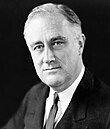






























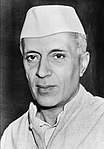




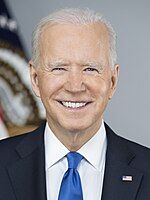



![Emblem[10] of Sillygoose762/sandbox](http://upload.wikimedia.org/wikipedia/commons/thumb/d/db/Emblem_of_India_%28without_motto%29.svg/60px-Emblem_of_India_%28without_motto%29.svg.png)














